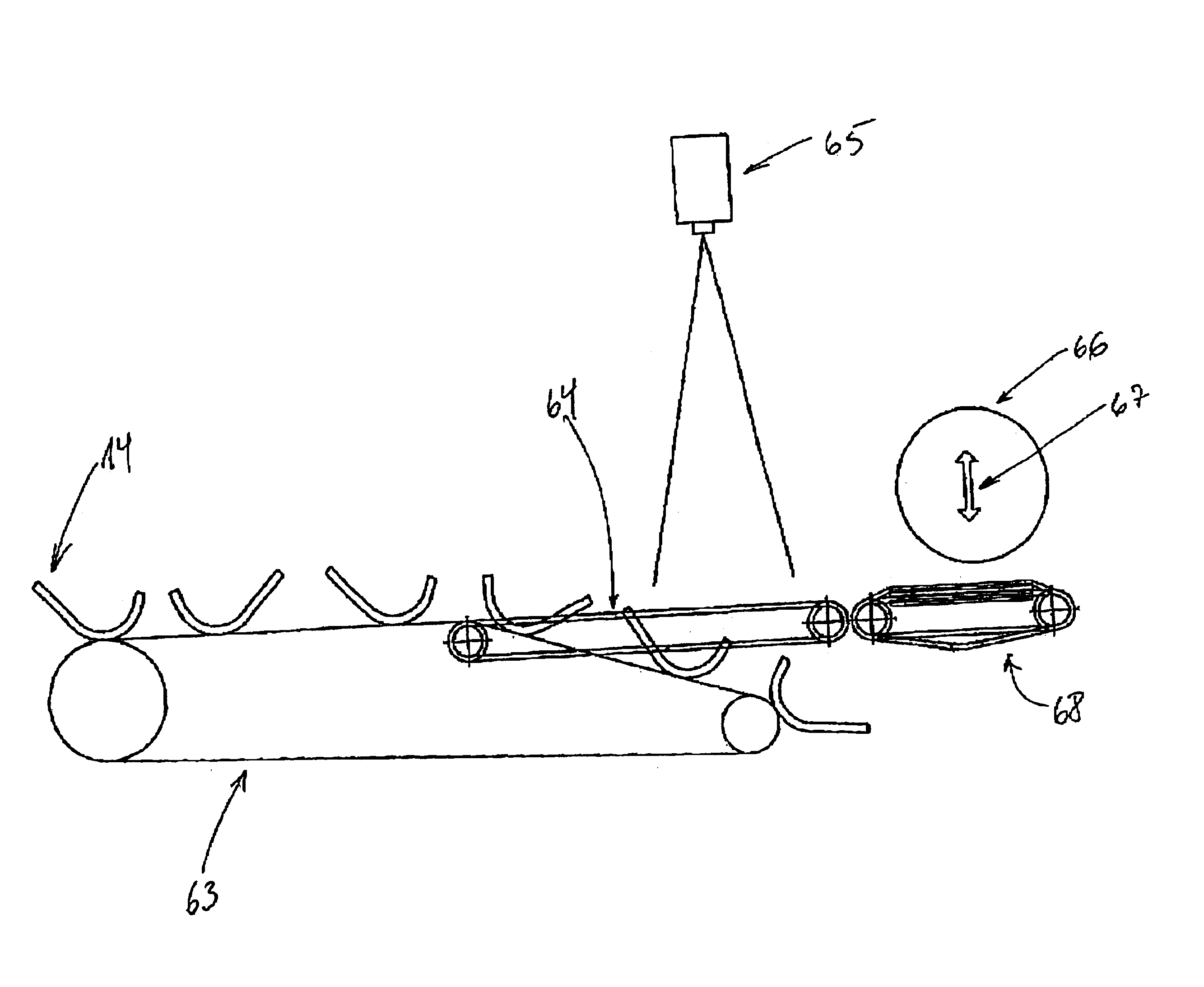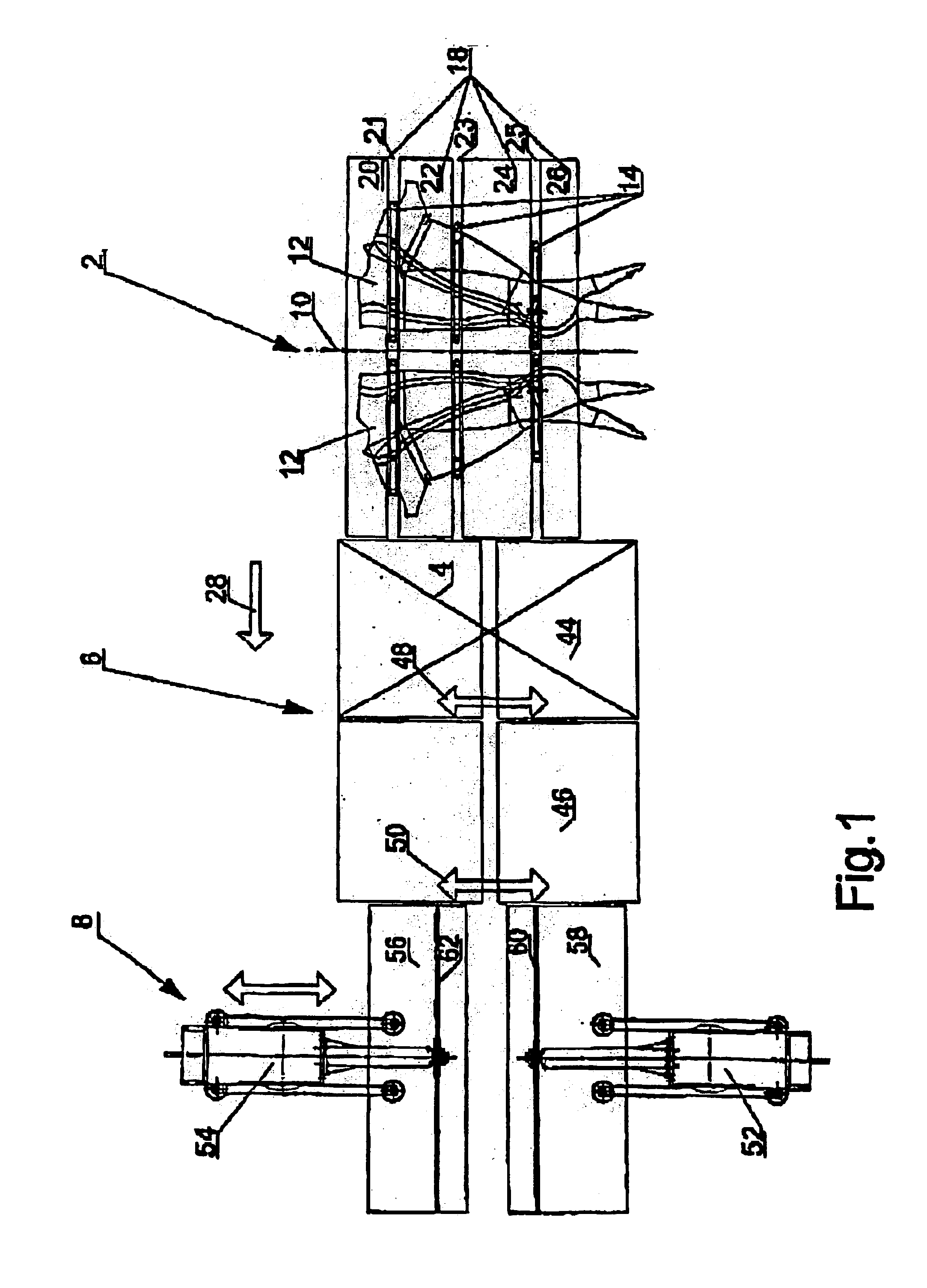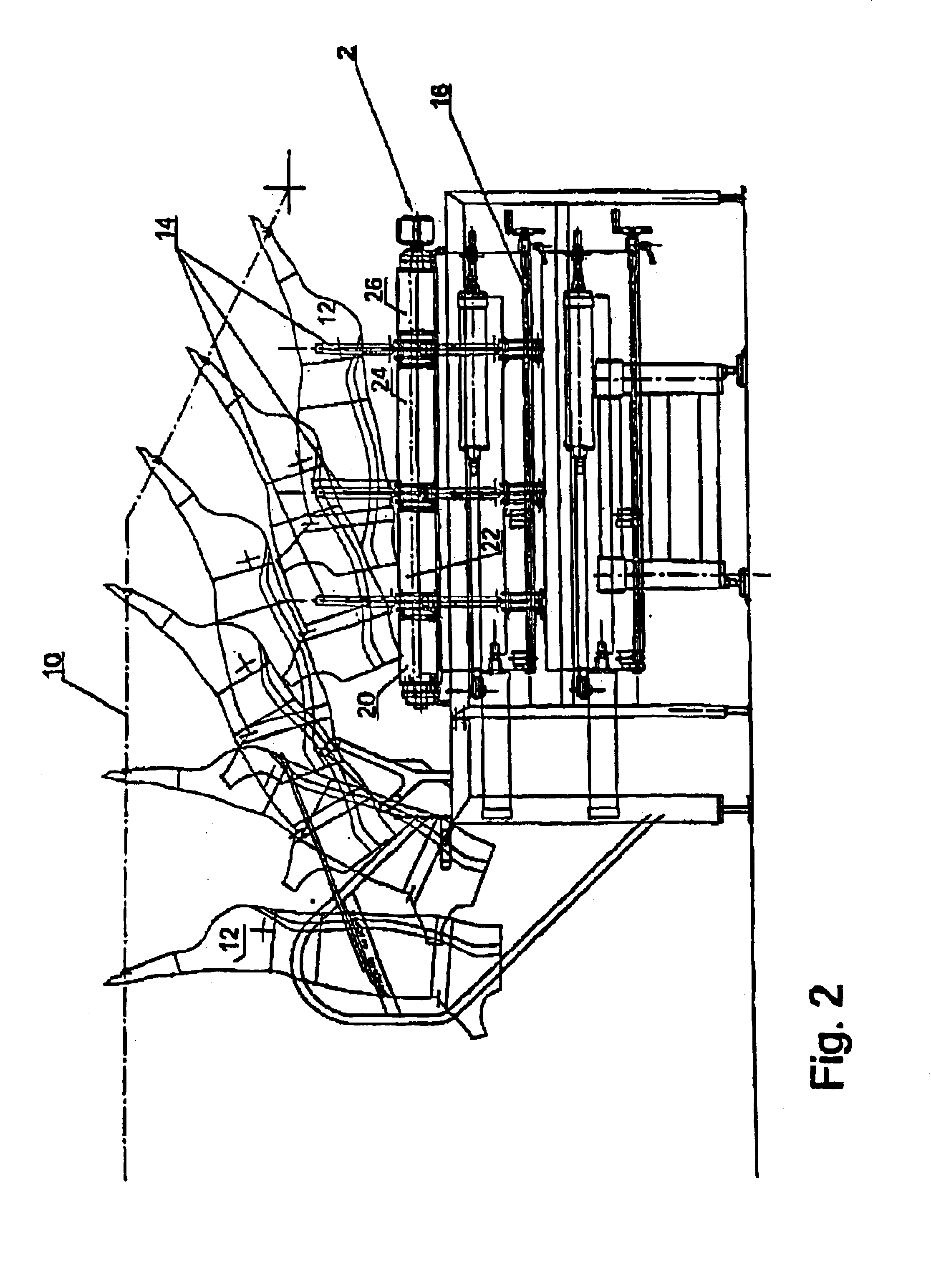Laying-down system and vision-based automatic primal cutting system in connection therewith
a technology of automatic primal cutting and laying-down system, which is applied in the direction of butchering, meat processing plant, slaughtering accessories, etc., can solve the problems of not always being certain and achieving optimal cut, and achieve high production rate, good grip, and high friction
- Summary
- Abstract
- Description
- Claims
- Application Information
AI Technical Summary
Benefits of technology
Problems solved by technology
Method used
Image
Examples
Embodiment Construction
FIG. 1 shows a schematic view of an embodiment of a fully-automatic cutting-up system for primal parting of half carcasses of pigs. The system is intended for adjustment for carrying out practically all types of known, desired primal parting cuts.
In the embodiment shown, the cutting-up system comprises a laying-down module 2, a vision system 4 (with associated calculation unit and interface for actuators which are not shown in detail, in that this is considered to be known technique), placed over a positioning module 6, and a saw module 8. Above the laying-down module 2, there extends a laying-down conveyor 10 (cf. FIG. 2) for the successive delivery of related half carcasses 12 to the laying-down module 2.
As indicated in FIG. 1, and as shown clearly in FIGS. 2, 3A, 3B and 4, the laying-down module 2 comprises a set of substantially U-shaped laying-down fixtures 14 which are laterally reversed in relation to each other. As will appear from FIGS. 3A and 3B, the fixtures 14 are suspen...
PUM
 Login to View More
Login to View More Abstract
Description
Claims
Application Information
 Login to View More
Login to View More - R&D
- Intellectual Property
- Life Sciences
- Materials
- Tech Scout
- Unparalleled Data Quality
- Higher Quality Content
- 60% Fewer Hallucinations
Browse by: Latest US Patents, China's latest patents, Technical Efficacy Thesaurus, Application Domain, Technology Topic, Popular Technical Reports.
© 2025 PatSnap. All rights reserved.Legal|Privacy policy|Modern Slavery Act Transparency Statement|Sitemap|About US| Contact US: help@patsnap.com



